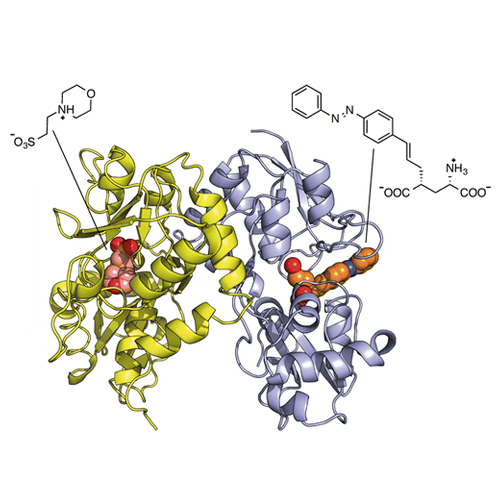A Photoswitchable Neurotransmitter Analogue Bound to Its Receptor
02-Dec-2013
Biochemistry, 2013, DOI: 10.1021/bi4014402, 52 (50), pp 8972–8974 published on 02.12.2013
Incorporation of the azobenzene derivative gluazo, a synthetic photochromic ligand, into a kainate receptor allows for the optical control of neuronal activity. The crystal structure of gluazo bound to a dimeric GluK2 ligand-binding domain reveals one monomer in a closed conformation, occupied by gluazo, and the other in an open conformation, with a bound buffer molecule. The glutamate group of gluazo interacts like the natural glutamate ligand, while its trans-azobenzene moiety protrudes into a tunnel. This elongated cavity presumably cannot accommodate a cis-azobenzene, which explains the reversible activation of the receptor upon photoisomerization.











